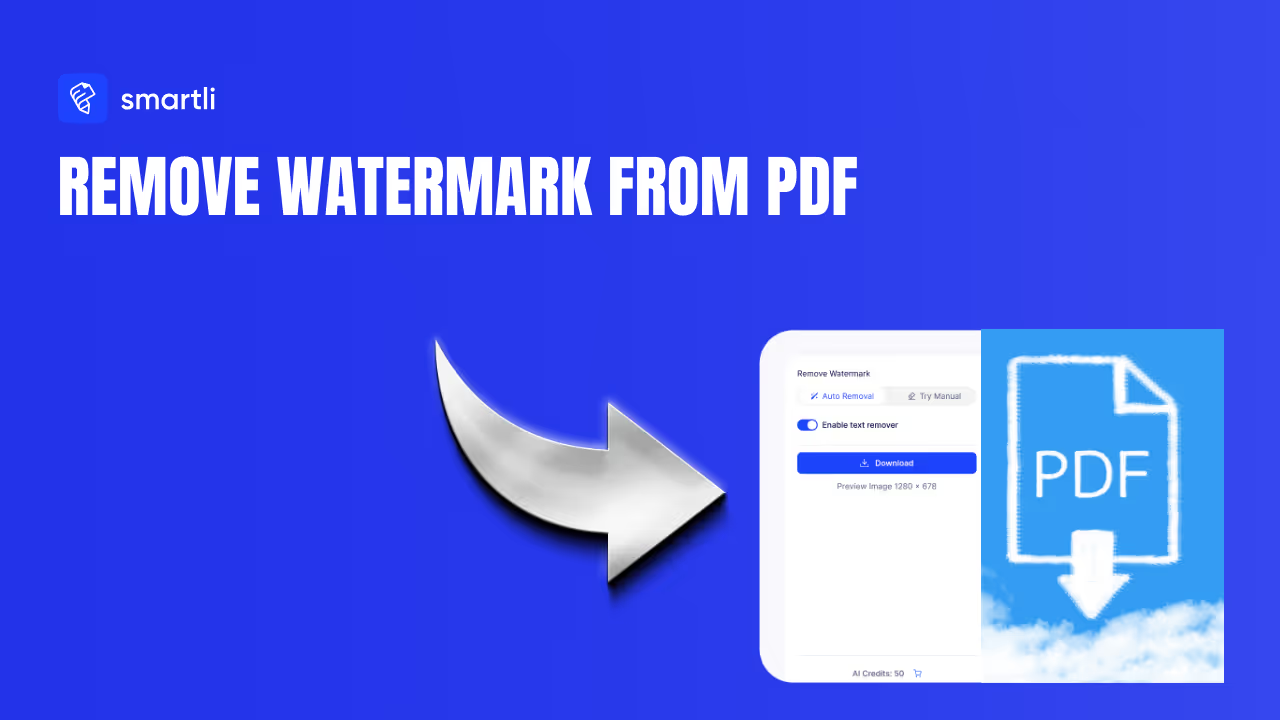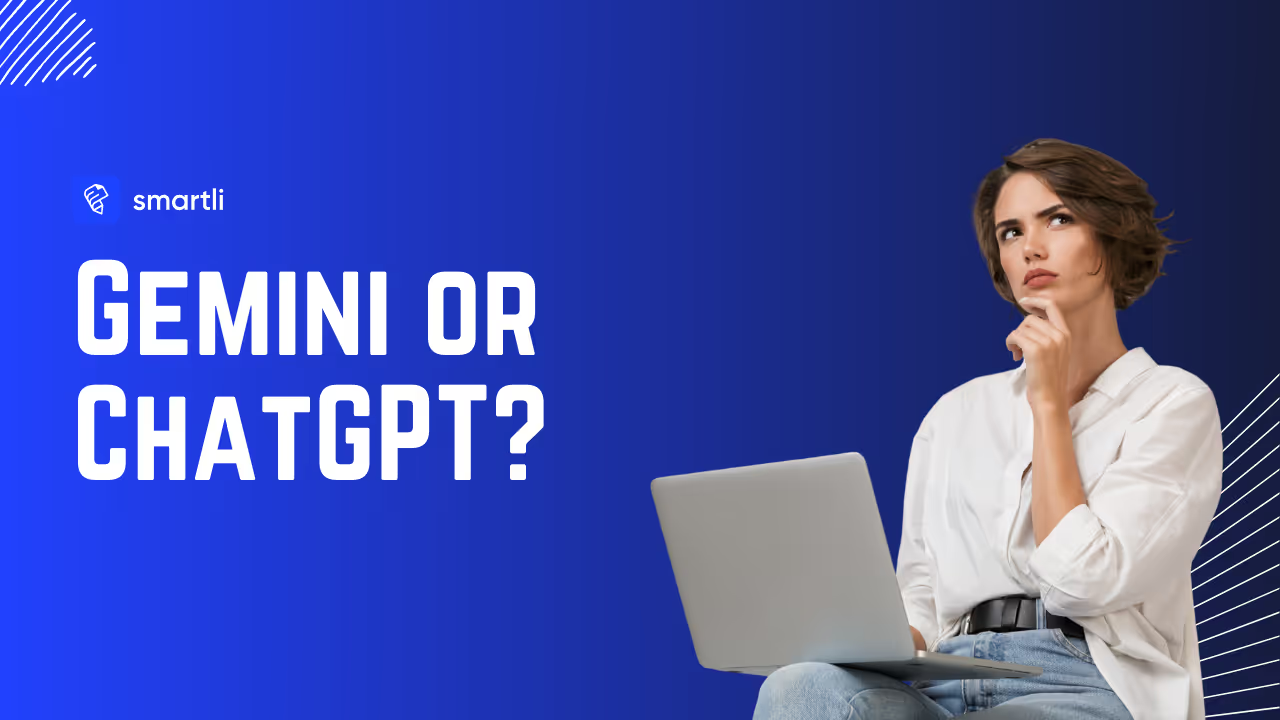Professional-looking product images matter more than most business owners realize. The difference between amateur photos and studio-quality visuals directly impacts how customers perceive your brand and whether they click buy or scroll past. Yet most people assume professional results require expensive equipment, hiring photographers, or spending hours learning complex editing software. Smartli's AI Photo Enhancer changes that equation entirely.

We’ll talk about how it works and helps.
Why Image Quality Directly Impacts Sales?
Quality images don't just look better—they perform better across every metric that matters to business owners. E-commerce conversion rates jump significantly when product photos meet professional standards. Research shows that high-quality images reduce return rates by up to 20%, meaning fewer unhappy customers and lower operational costs for refunds and restocking.
The psychology behind this is straightforward: customers can't hold products in their hands, so images become their primary decision-making tool. Poor lighting, muddy colors, blurry details, and unprofessional composition create doubt. When customers have doubts, they don't buy. They move to competitors with better photos instead.
This problem compounds across different sales channels. The same product image needs to work on your website, Amazon, Facebook, Instagram, Pinterest, and multiple other platforms. Each platform has different requirements, lighting conditions, and viewing contexts. A single professional image is nearly impossible to achieve without editing help.
The Problem With Traditional Photo Editing
Getting studio-quality images through traditional methods creates multiple headaches. Professional photographers charge $50-300 per shoot depending on location, equipment, and complexity. If you need to update photos seasonally or when adding new products, those costs multiply rapidly.
Even cheaper alternatives like freelance editors charge $5-15 per image, and that adds up fast when you have hundreds of photos to improve. More importantly, manual editing takes time. A single image might require 15-30 minutes of work including color correction, shadow adjustment, exposure balancing, and detail enhancement. A product catalog of 200 images means weeks of editing work or thousands in outsourcing fees.
The timeline problem makes things worse. If you discover your product photos need improvement mid-campaign, waiting weeks for edits to happen means missing sales opportunities. DIY editing software like Photoshop or Lightroom solves the cost problem but creates a new one: the learning curve is steep, and mastering professional-level editing takes months of practice. Most small business owners don't have months to spend learning software when they should be focused on actual business growth.
How AI Photo Enhancement Works
Modern AI photo enhancers use deep learning trained on millions of professional images. The system learns patterns that distinguish studio-quality photos from amateur shots—how light should fall on products, which color temperatures look professional versus amateur, how details should be sharpened without looking artificial, and which adjustments enhance appeal without deceiving customers.
Smartli's AI Photo Enhancer analyzes your images and applies intelligent adjustments across multiple dimensions simultaneously. It evaluates lighting and automatically balances exposure so details emerge from shadows without washing out highlights. It adjusts color temperature to remove unwanted color casts that happen when shooting under different lighting conditions. It sharpens details and enhances textures, making fabric weaves visible, metal surfaces reflective, and product edges crisp and defined. You can also use it for model photoshoots and retouch those images.
The real power comes from doing all this without the trial-and-error cycle traditional editing requires. You don't adjust one slider, evaluate the result, adjust another slider, and repeat dozens of times. The AI analyzes your image and applies comprehensive adjustments instantly. What typically requires 20-30 minutes of manual work happens in seconds.
What Does Smartli’s AI Photo Enhancer Do?
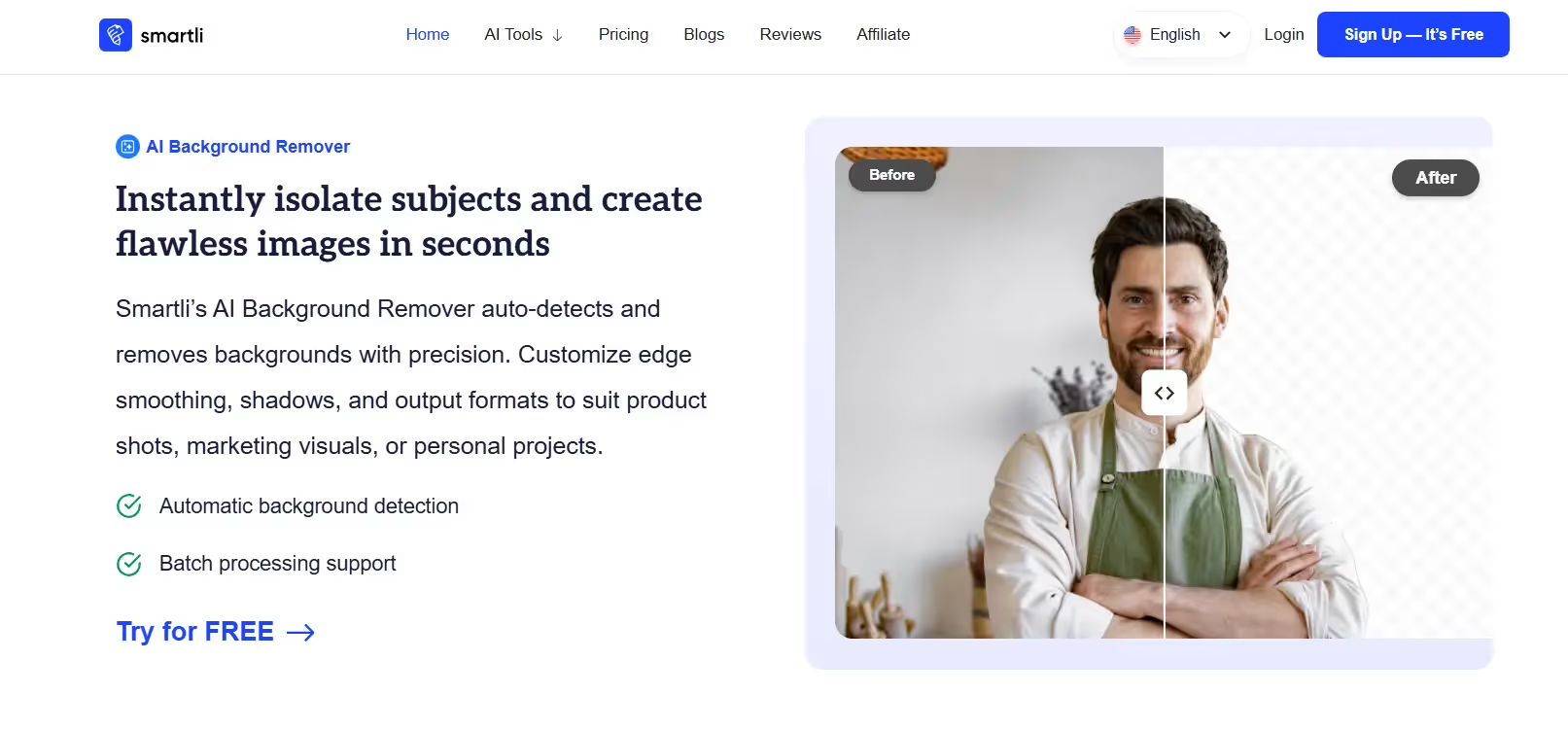
This tool automatically improves image quality, adjusts lighting, sharpens details, and corrects color problems in seconds, delivering studio-quality results without the studio overhead or technical expertise. You can also use Smartli to remove backgrounds and watermarks.
Whether you're running an e-commerce store, managing marketing campaigns, or building a content portfolio, AI photo enhancement removes the barrier between your current images and the professional visuals your audience deserves.
Key Features of Smartli's AI Photo Enhancer
Here are its key features:
Automatic Exposure and Lighting Correction

Lighting is the foundation of professional photography. Bad lighting makes even good products look cheap, while excellent lighting makes average products look premium. Smartli's AI automatically balances exposure, pulling detail from shadows without losing highlight information. This is especially valuable for products with reflective surfaces, complex packaging, or multiple colors that need balanced exposure.
Smartli adjusts lighting intelligently based on your product type and color palette. Dark products get different treatment than light ones. Complex scenes with multiple colors get exposure balancing that preserves each element's visibility. Simple, clean-background shots get tighter, more dramatic lighting adjustments. The AI understands context.
Color Temperature and White Balance Fixes
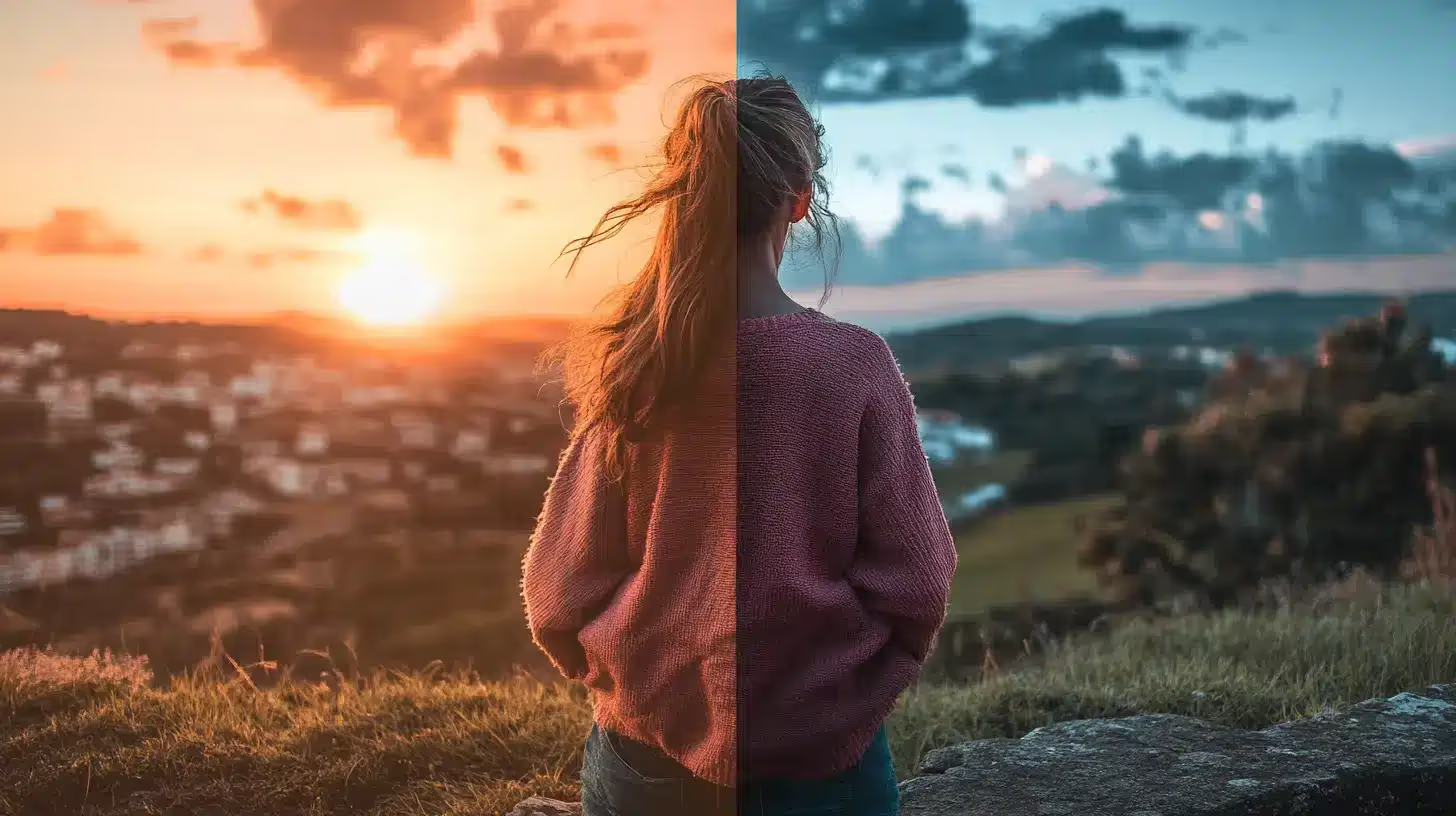
Color casts cause one of the most common photo problems, especially for e-commerce sellers shooting on different days, times, or locations. Morning sunlight creates warm orange tones, afternoon sun creates harsh shadows with blue undertones, and indoor lighting under fluorescents creates sickly green casts. These color problems make colors look inaccurate and reduce buyer confidence.
Smartli's color correction analyzes your image and automatically sets proper white balance, removing unwanted color casts while preserving accurate product colors. This matters enormously for fashion, where customers need to see the true fabric color. It matters for food products, where color influences perceived freshness and appetite appeal. It matters for any product where customers need to match actual color to expectations.
Detail Enhancement and Sharpening
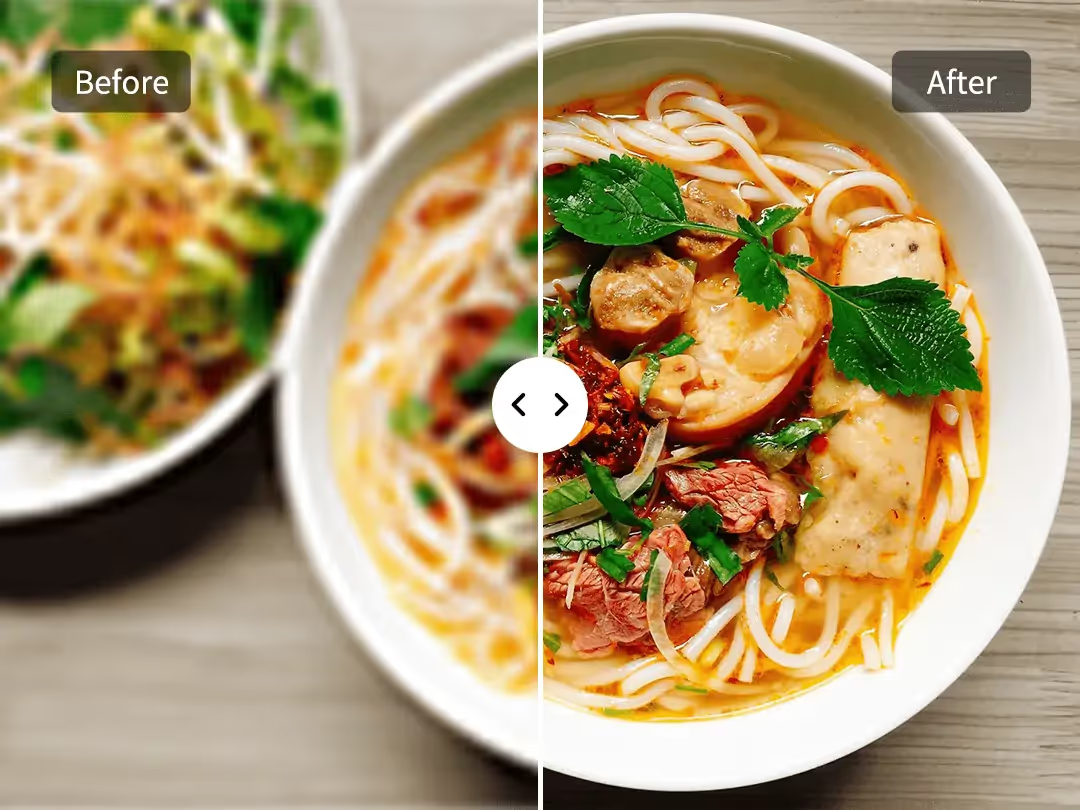
Product photography requires visible detail. Customers need to see fabric texture, stitching quality, material finish, and surface details that show product quality and justify your price. Blurry or soft images make even premium products look mediocre.
Smartli's detail enhancement intelligently sharpens product images while maintaining natural appearance. Overly aggressive sharpening creates visible halos and artifacts that look obviously edited. Smartli balances sharpening with natural appearance, making details pop without looking artificial or processed. Texture becomes visible, reflections shine, and surfaces appear precisely rendered.
Contrast and Saturation Adjustments
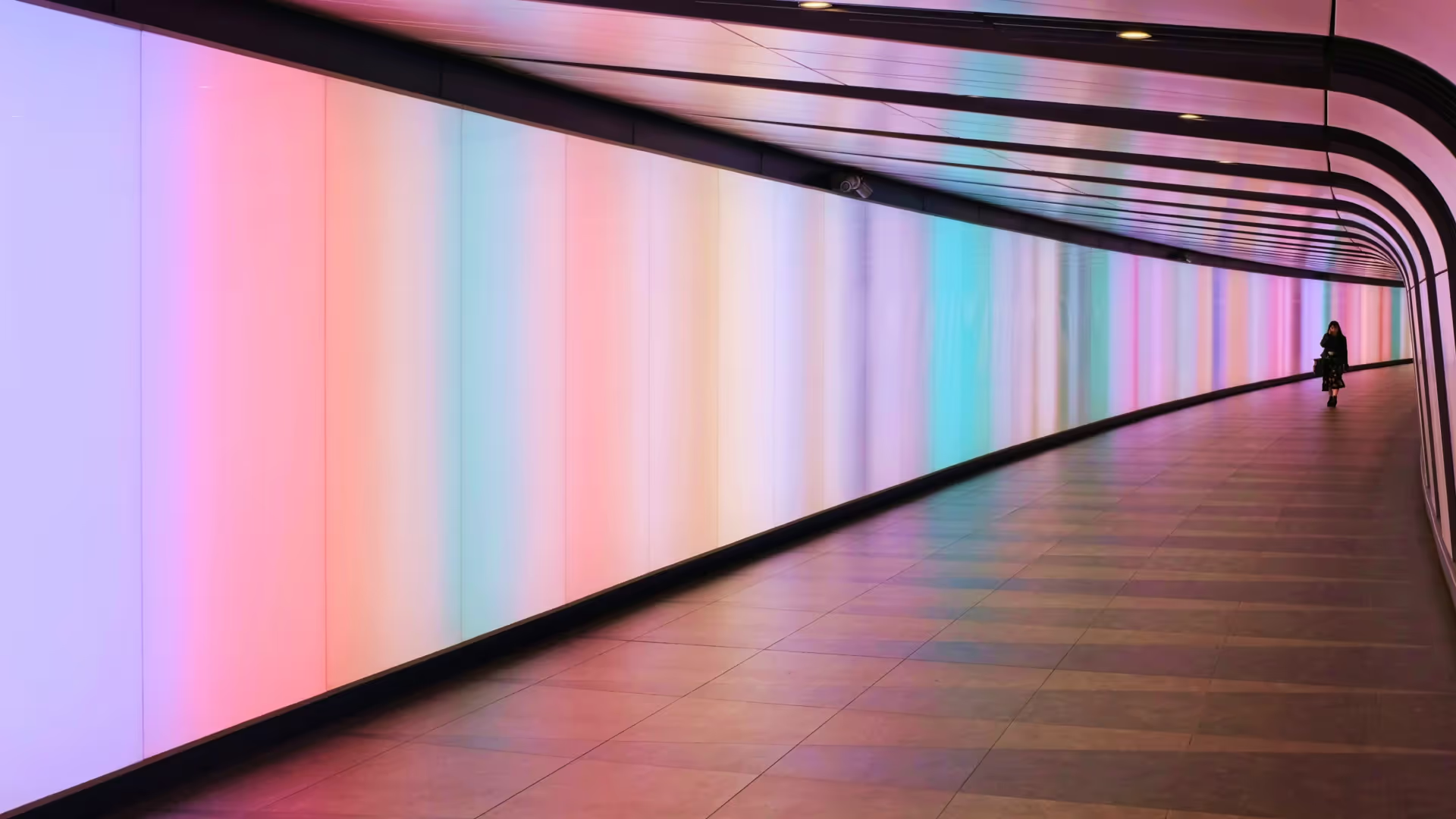
Every product benefits from properly balanced contrast and saturation. Too little contrast makes images look flat and boring. Too much saturation makes colors look artificial and untrustworthy. Too much contrast makes products look harsh and uninviting.
Smartli adjusts contrast and saturation based on your specific image content. Bright, colorful products get different treatment than neutral-toned items. The adjustments enhance appeal without misleading customers about actual product appearance.
How Smartli's Photo Enhancer Compares to Manual Editing
Speed is the most obvious difference—seconds versus hours—but the advantages extend beyond just time savings. Manual editing requires specialized skills and ongoing learning as editing software evolves. Smartli requires zero technical expertise. Upload and enhance.
Consistency is another major advantage. Human editors have bad days, get tired, and make inconsistent choices across batches. Smartli applies the same professional standards to every image. Your entire catalog looks cohesive and professionally edited.
Cost comparison is dramatic. Professional photographers and editors run $50-300 per shoot or $5-15 per image edit. Smartli processes unlimited images for monthly subscription fees under $100. The math is obvious for anyone with more than 20 images needing enhancement.
Professional editing produces excellent results if you have the budget and timeline for it. Smartli produces professional results immediately and affordably. The choice depends on your business stage and budget constraints.
Getting Started With AI Photo Enhancement
Here is how to get started with using AI photo enhancers:
Understand Your Starting Point
Before using AI photo enhancers, recognize what you're working with. Well-lit photos with clear subjects and simple backgrounds enhance easily and produce excellent results. Poorly lit photos shot in dark rooms require more aggressive enhancement and might not produce perfect results. Extremely low-resolution images can only improve so much because the underlying data is limited.
This doesn't mean enhancement won't help poor photos—it usually does—but it helps to have realistic expectations. Start with your worst-performing product images and see if enhancement improves them. Measure improvement by tracking conversion rate changes before and after.
Prep Your Images for Best Results
High-resolution source images produce better enhanced results than compressed or low-resolution originals. When uploading images, use the highest quality versions available. Remove obvious obstructions or distracting elements before enhancement if possible, though Smartli's tools handle many issues automatically.
Consider the final use case when enhancing. Product page images need high resolution and clear details. Social media images might look good with more stylized enhancement. Marketplace listings have specific requirements—Amazon wants certain formats, eBay different sizes. Think about how you'll use the enhanced image before processing.
Batch Process for Efficiency
If you have multiple images to enhance, batch processing saves enormous time. Upload entire product categories or seasonal collections at once, and let the AI enhance everything simultaneously while you work on other business tasks. Batch processing is especially valuable for seasonal updates or complete catalog refreshes.
Save time by batching similar products together. All product photos shot under similar lighting get enhanced as a batch. All lifestyle images get enhanced separately. This consistency helps maintain a cohesive visual appearance across your catalog.
Test Different Enhancement Levels
Smartli offers adjustment controls that let you dial enhancement intensity up or down. Start with standard enhancement settings, review results, then adjust if needed. Some products benefit from more aggressive enhancement, while others look best with subtle adjustments that preserve natural appearance.
Test on a few products before processing your entire catalog. Find the enhancement level that works best for your specific products and audience. Once you've identified optimal settings, you can apply them consistently across similar products.
AI Photo Enhancement for Different Business Types
Here’s what you need to know:
E-commerce and Product Catalogs
E-commerce sellers benefit most from AI photo enhancement because consistency matters enormously. Customers browsing your catalog develop expectations about visual quality and presentation style. Mixed quality—some images enhanced, others not—looks unprofessional and damages brand perception.
AI photo enhancement lets you maintain gallery-quality appearance across hundreds or thousands of products without the time or cost of professional photography. Enhanced images convert better, generate fewer questions about product appearance, and reduce return rates from color or appearance surprises.
Content Marketing and Blogging
Marketing teams use product images differently than e-commerce stores. Blog posts, social media, and advertising often crop, overlay, or combine images. Better starting image quality makes all these uses better. AI enhancement ensures your source material always looks professional, no matter how you modify it for marketing purposes.
Blog posts about products benefit from professional photography. People expect marketing content to look polished and high-quality. Starting with enhanced images gives you better source material for creating hero images, social posts, infographics, and advertising creative.
Influencer and Content Creator Portfolios
Content creators and influencers build reputation on consistent visual quality. Followers notice if some posts look professional and others look amateur. AI photo enhancement helps maintain consistent quality across your portfolio, building audience trust and attracting brand partnerships.
Enhanced portfolio images also perform better for showing clients your work or pitching collaborations. Agencies and brands see enhanced images as higher-quality work than raw, unedited content.
Fashion and Apparel
Fashion photography requires particular attention to color accuracy and detail. Customers need to see fabric texture, stitching quality, fit details, and true colors. AI photo enhancement for fashion specifically sharpens details, corrects color temperature for accurate fabric colors, and balances contrast for visual appeal without dishonesty.
Seasonal collections benefit from batch enhancement when launching new lines. Process entire collections at once to ensure consistent visual presentation, then update seasonal styling or backgrounds as needed.
Best Practices for Using AI Photo Enhancement
Here are our tips:
Maintain Accuracy Over Aggressiveness
The golden rule of AI photo enhancement is never deceive customers. Enhance to bring out true product qualities, not to create false impressions. Correct lighting and exposure to show how products actually look under good light. Don't oversaturate colors or blur backgrounds to hide defects.
This approach builds customer trust. When your products arrive and look exactly like the photos, customers are happy and likely to buy again. If photos are misleading, even by being over-enhanced, you get returns, negative reviews, and lost repeat customers.
Create Enhancement Templates
Once you find enhancement settings that work well for your products, save them as templates. This speeds up future work dramatically. Different product categories might need slightly different enhancement approaches, so create separate templates for apparel, accessories, jewelry, home goods, and whatever other categories you sell.
Templates ensure consistency across your catalog. Every black t-shirt gets identical enhancement treatment. Every ring gets the same lighting and color adjustments. This visual consistency strengthens brand perception and professionalism.
Use Enhancement as Part of Larger Optimization
AI photo enhancement works best as part of a complete visual optimization strategy, not as a standalone fix for bad photography. Combine enhanced photos with good backgrounds, professional layout, consistent styling, and multiple image angles showing different product views.
Think of enhancement as improving your foundation. The foundation needs to be reasonable to begin with. A perfect enhancement can't fix fundamentally bad composition or unusable images.
Monitor Performance Changes
Track metrics before and after enhancement to see actual impact. Monitor conversion rates, time on product pages, click-through rates, and return rates. If enhancement improves performance, expand it to your entire catalog. If specific products don't improve, analyze why—maybe they need different backgrounds, better angles, or descriptions rather than enhancement.
Data-driven decisions about enhancement help you prioritize work and budget allocation. Focus enhancement efforts on products where you see measurable performance improvements.
Common AI Photo Enhancement Mistakes to Avoid
Here’s what you need to watch out for:
Over-Enhancement and Artificial Appearance
The most common mistake is enhancing too aggressively, creating images that look edited rather than natural. Over-sharpened images develop visible halos. Over-saturated colors look fake. Over-brightened images lose texture and detail.
Start conservative with enhancement intensity. You can always enhance more, but you can't un-enhance without reprocessing. Better to undershoot and gradually increase than to overshoot and create false impressions.
Inconsistent Enhancement Across Your Catalog
Mixed enhancement levels create visual inconsistency that damages brand perception. Either enhance your entire catalog systematically or don't enhance at all. Partial enhancement looks like you couldn't afford to do the whole job properly.
This is why batch processing and templates matter. They help you maintain consistency effortlessly.
Ignoring Platform-Specific Requirements
Different platforms have different requirements. Amazon requires specific image dimensions and background treatment. Pinterest prefers tall, vertical images. Instagram works best with square formats. Facebook demands fast-loading files for mobile viewing.
Enhance your images, then optimize them for specific platforms afterward. Don't just use the same enhanced image for every channel.
Using Enhancement to Hide Product Problems
Tempting though it is, don't use enhancement to hide defects or create misleading impressions. Scratched products still look scratched. Worn items still look worn. Miscolored items still look off-color. Enhancement shows these problems more clearly by improving overall image quality and making problems more visible through contrast.
Enhancement works best on good products needing better presentation, not on mediocre products needing deception.
Not Measuring Your Enhancement Results
Tracking the impact of AI photo enhancement helps you understand whether the effort and cost pays dividends. Start measuring before you enhance to establish baselines, then monitor changes afterward.
Key metrics include conversion rate—the percentage of visitors who purchase. Track average session duration on product pages to see if enhanced images keep customers engaged longer. Monitor return rates to see if enhanced photos create more accurate expectations. Track click-through rates from social media and search results to see if enhanced images attract more engagement.
Calculate your ROI by comparing the cost of enhancement to the revenue increase from improved conversions. If enhancement costs $50 monthly but generates $500 in additional revenue from improved conversions, the ROI is obvious.
Most businesses see measurable improvements within 30 days of implementing enhancement across their entire catalog. The visible quality improvement drives customer perception and conversion rate changes quickly.
Conclusion
Smartli's AI Photo Enhancer delivers professional visual results instantly by automatically correcting exposure, color, and detail across your entire image catalog.
Whether you're managing hundreds of product photos for e-commerce, creating marketing visuals for content campaigns, or building a professional portfolio, AI photo enhancement removes the barrier between amateur and professional results.
AI Photo Enhancer FAQs
How much time does AI photo enhancement actually save compared to manual editing?
Manual editing typically requires 20-30 minutes per image for professional results. AI photo enhancement processes images in 10-30 seconds, making it roughly 50-100 times faster. For a catalog of 500 products, manual editing requires weeks of work while AI enhancement completes in hours.
Can AI photo enhancement fix extremely poor quality photos or low resolution images?
AI enhancement works best with reasonably good starting material—decent resolution, clear subjects, and adequate light. Very low resolution or extremely dark images improve less dramatically because underlying data is limited. Enhancement brings out what's there but can't create detail that doesn't exist.
Do enhanced photos look obviously edited or do they look natural and professional?
Well-done enhancement looks natural and professional, not obviously edited. The goal is bringing out product qualities through professional-level lighting, color, and detail correction. Poorly executed enhancement looks artificial, which is why starting conservative with enhancement intensity is important.
What file formats and sizes work best for AI photo enhancement?
JPG, PNG, and TIFF formats all work well. High-resolution images process better than compressed versions, so upload the highest quality original image available. Most enhancement tools support files up to 10-20 MB depending on the platform.
Can you use enhanced images on multiple sales channels without modification?
Enhanced images work across channels, but you should optimize them for each platform's requirements. Amazon needs specific dimensions and white backgrounds. Instagram prefers square formats. Pinterest wants vertical images. Enhance your source image, then optimize copies for each platform's specifications.
How does AI photo enhancement compare to hiring a professional photographer or editor?
Professional photography costs $50-300 per shoot while freelance editors charge $5-15 per image. Both require weeks of scheduling and waiting. AI enhancement costs under $100 monthly for unlimited processing and produces results instantly. Professional work is still better for specialized needs, but AI enhancement offers professional-quality results at a fraction of the cost and timeline.














